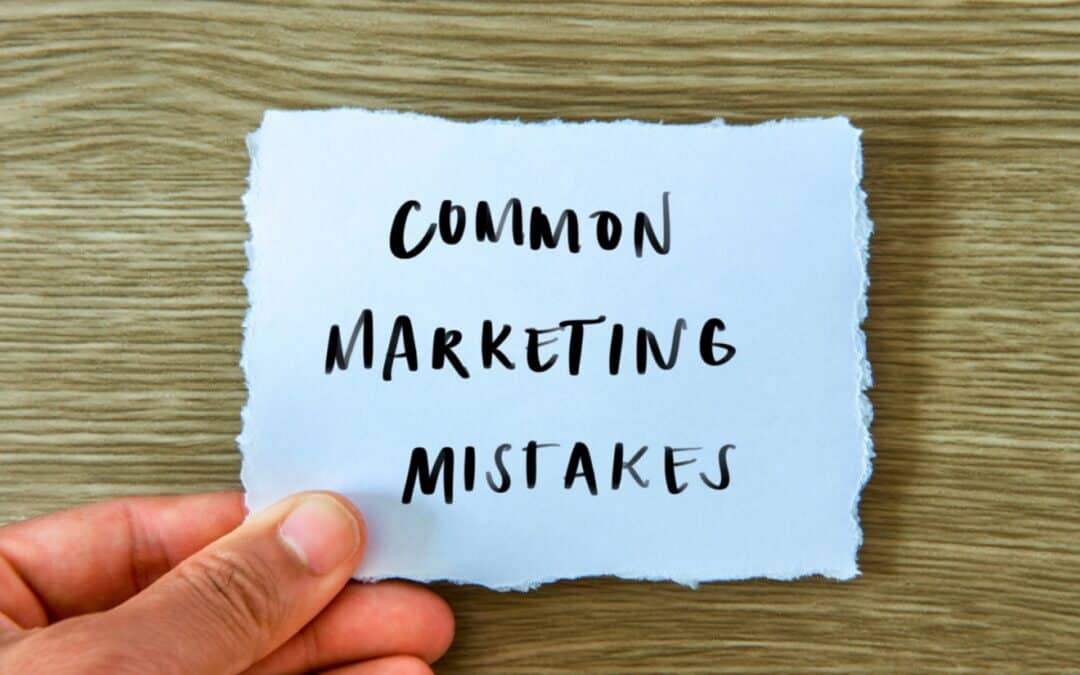Don’t look now, but you are already in the first quarter of a new year. A new year means new clients, new goals, and new opportunities to grow your firm. It’s an exciting way to start the year, but it won’t last long if your law firm’s growth strategy, budget and marketing plans aren’t right from the start.
Does your firm have a marketing plan? Is it written? Have you developed a growth strategy? Does this line up with your marketing plans? Have you established a budget for the marketing? How did you work that out? Does the budget line up with the growth strategy and the marketing plans? Have you worked out who is doing what and when, and how this marketing plan will be executed?
Answering no to any of these questions could spell serious trouble.
Many law firms plan their marketing budget based on the previous year and how much they’re willing to spend on marketing. This is a great way to hold your firm back from achieving your real revenue goals, or to spend too much on wasted efforts.
If you want the most bang for your marketing buck, here are four critical keys to planning and implementing a marketing budget that will get results.
As an exercise, ask yourself if you want to grow your firm this year. If the answer is yes, then give some more thought about what that growth looks like, that is, categorise it.
Identify your business growth strategy
Once you’ve aligned your firm’s growth goals with your marketing goals, you’ll need to identify your marketing budget so you can develop a detailed marketing plan that supports your strategy. Basically, you will choose from three options:
Lean Growth Plan: 1 – 2% of your top-line revenue. Here you are committing to engaging and retaining current clients with simple tools and strategies. This is ideal for firms that are looking to maintain their market position and don’t have bigger growth goals.
Modest Growth Plan: 3 – 4% of your top-line revenue. The goal here is to target and attract new leads and retain current clients and doing this with more detailed strategies. This is ideal for firms that are looking to increase their market share and have moderate growth goals (10 – 15% annual growth).
Ambitious Growth Plan: 5% or more of your top-line revenue. Your target is to accelerate your results by applying more resources that are focused on driving leads, conversion and sales. To do this, you’ll need more detailed marketing strategies. This option is ideal for companies who have ambitious plans to grow and increase their market share (20% or more annual growth).
| Pro Tip: Even if your initial percentage number is inaccurate, it is less important than getting the number exactly right because at least you have a figure. This is because you can have the right budget but be spending it on the wrong things – this is what we regularly confront consulting with law firms around the country. |
Planning your marketing strategy
A marketing plan needs to be written and not in someone’s head. It is a detailed roadmap that outlines your firm’s marketing strategies, tactics, costs and projected results, usually over a year. Along with your plan, needs to be a budget so you have funds to allocate to approved strategies. In simple terms, not having a plan or an allocation of resources means you are putting the growth and continued success of your firm in jeopardy.
Writing a marketing plan can be a time-consuming exercise that some lawyers find daunting. A simple way to start is to identify your areas of law and work out the total number of files for each area you opened last year. At the same time, it is useful to estimate an average file opening estimate for those files.
To illustrate, if you are calculating family law files, it may be that last year you opened 48. So that would be 4 per month on average. For this year you need to apply the growth strategy goal to get the number you are targeting.
In doing so if this is new to you, it is pointless adding say 20% to this number based on hope without having a marketing strategy set.
If you have a Lean Growth Plan in place we think its preferable to rely on last year’s numbers and reproduce them and then once you add your marketing strategy to that, you can enjoy the success that comes with that, should your plans stimulate more work.
If you have a Modest or Ambitious Growth Plan, then you should recalibrate your file openings based on an increase on last year’s numbers in line with that growth status.
In practical terms, when calculating those file numbers, you need to work out what the average matter is worth to you. Say you are calculating family law work. In some simple dissolution only matters the fee estimate figure might be $1,000 for example (naturally exclude any disbursements, these numbers relate to your fees only). But a property settlement file would be considerably higher (and we appreciate in this instance the numbers could vary wildly and are only an estimate at the time the file is opened). Such a file might be worth on average say $20,000. If you did say 2 of each per month then you have a total of $42,000. This divided by 4 means your average family law file is $10,500. This can be an artificial number as it can change depending on the nature of the family law work you end up doing but nevertheless, you need to start somewhere.
If these calculations are in the too hard basket then it’s important to remember that even a simple plan is better than none.
| Pro Tip: This exercise also highlights that if your marketing strategy works, then you can very quickly see that your marketing budget can very quickly more than pay for itself. |
To grow you need to invest in your own firm
Before you calculate your marketing budget, you need to align your marketing goals with your firm’s strategic goals along with its vision for growth in the coming year. All of this needs to be supported by the budget. If you plan to grow by 20%, but only want to invest enough in marketing to get new business cards for everyone in your firm, then brace yourself, because we can tell you now you’re probably going to be horribly disappointed with the results of your investment.
Growth comes at a cost. It will cost you money to make money. So, armed with your goals and a budget, you can now get into the nitty-gritty of executing your plan to transform your marketing goals into reality. The complexity of your plan will depend on the marketing budget you’ve identified.
| Pro Tip: If your plan involves the use of external marketing experts, then set up an arrangement whereby marketing costs are paid monthly rather than upfront. We have always found lawyers appreciate such an arrangement to assist with their cash flow. |
The big question: What should you do?
Whatever you do needs to be tailored for your firm. Let’s start with some easy no-no’s to avoid, unless you have a rich fairy godmother. We recommend you pass on opportunities like Yellow Pages, Radio or TV advertising, any Newspaper ads, Billboard advertising, anything in the Cinema, leaflet drops, and the back of beer coasters at your local RSL.
After this it can be more complicated because we need to know what marketing assets your firm already has and to look at them objectively.
So, the first place to start is for you to have an objective look at your website.
Firms with no website: If you don’t have a website then you need to get one and do this first even if that uses up your entire budget because if you do not have a website you are invisible and your firm is trying to defy gravity to survive.
Firms with a horrible website: It gets harder when a firm has a website that is horrible, and it simply doesn’t work for them. We find though that this category falls into these sub categories:
Horrible websites where the principal lawyer thinks it’s fine when it’s not. Unless the lawyer alters his or her assessment there is little hope in this firm’s marketing success. Staff at these firms need to reconsider their career path and smart law firm owners want to be competitors with firms like this.
Horrible websites where the lawyer knows it needs improvement. Anyone can find themselves in this position and it may be the website was good years ago but is now just old and in need of an upgrade. Regardless of the reason, you should start here by upgrading your website to make it a more valuable asset. Your aim is to have a better chance to get the phone call or online enquiry from your website than you currently do.
Horrible websites that are new or where considerable funds have been spent on it. Unfortunately, the reality is that if you have invested into a website and it is simply not working for you, then you might need someone to ‘run the ruler’ over it. There is no point continuing with a non-functioning website particularly if you consider the opportunities that will be lost for as long as you leave it.
| Pro Tip: If you think you are in one of these positions give us a call and we will let you know what we think and give you some options on a no-obligation basis. |
For firms with advanced marketing strategies you should consider lead nurturing and landing pages on your website to progress a lead into a client.
Are you regularly communicating with your clients: If you are not communicating with your clients, then you need to assume someone else is communicating. Be realistic because every day your clients are being exposed to how their legal problems can be solved by another lawyer who does that work – your competitors.
To be clear we are not talking about sending a Christmas card to some of your clients once a year. Believe it or not some firms do that and think it’s a major plank to their marketing strategy!
If you have reviewed your website objectively and it doesn’t need an upgrade, then you should write a newsletter to your clients and have the articles appear on your website. If you have a very small firm with a small budget this might be a quarterly newsletter but for bigger firms it should be with the frequency of about every month to say 6 weeks, so that you send about 8 to 10 publications per year.
Sending newsletters ticks several marketing boxes. First, having content on your website will help your search engine optimisation and your Google rankings. Second, you are providing valuable content to those people who already know and trust you. This helps them remember who you are and what you do (unless it’s a client like your mother, lawyers who think most of their clients remember them are kidding themselves). Third, you can get the benefit of leveraging off your database so that whilst your client might not have a legal need for the article you published, their next door neighbour, or mother-in-law, or work colleague might.
You can also publicise seminars or any promotional activities you are planning in your newsletter too. Or simply inform all your clients, all at once, about things you need to update them about – like relocating your office, doing new areas of law, someone joining the firm etc.
For firms more advanced in their marketing strategies they should consider segmenting their database and sending specialised newsletters to each segment on a regular and ongoing basis.
| Pro Tip: If you have always wanted to do a newsletter but haven’t you first need to develop your database. We have some guidelines on the best way to do this. So, if you are interested let us know. |
Search engine optimisation & Google Ads: If you want to give your website a boost and make it more noticeable then this can be a good marketing move.
However, and this is important, there is no point spending any money on SEO or Google Ads if you have a poor website. All you will be doing is throwing your marketing dollars away.
If you have a poor website (not as judged by you but by the public) you may well get many ‘hits’ on your website, but that’s all you will get, as people will ‘bounce away’ if your site is not up to scratch. So, if you think you have a good website and have spent SEO dollars that hasn’t worked then you might need to reassess your view of your ‘good’ website. That or change SEO agencies.
| Pro Tip: Some agencies won’t tell you the website is the problem and you only find out after about 6 months of wasted SEO funds. Call us if you suspect you might be in this category or just need help. |
Social Media marketing: To be frank this is not as important as the other marketing strategies we have addressed above and if your marketing budget is already at stretching point then stop at this point.
On the other hand, if you have staff who are familiar with the different social media platforms relevant to your firm and you already post articles on your website, then you should make mention of these articles and create a link so that you drive more traffic back to your website. That said this is a simple and inexpensive solution you might want to consider.
Relationship marketing: This is hard to pin to a definition but generally is regarded as a facet of customer relationship management that focuses on client loyalty and long-term engagement rather than shorter-term goals like client acquisition and individual files. The goal of relationship marketing is to create strong, even emotional, client connections to a brand that can lead to ongoing new work.
Simple examples would be just checking in on a client with a ‘how are you going’ phone call, catching up by having an afternoon coffee or beer after work, popping in to their business when you are in the area (and getting to know the other key people in their business), or simply sending them an email with an attachment following a newspaper story that they would find relevant.
These people are your best clients and those who provide the most work on an ongoing basis. Some might not be clients at all but are referrers of work.
In our view you should never delegate these marketing activities to others if it is you that enjoys this relationship. In the old days you would take these people to lunch, the problem today is that this approach is a one on one exercise and (health issues aside) can be time consuming and expensive. Plus, there are not enough days in the year to take all your clients to lunch as many times as you should, so you need to restrict it to the key clients.
| Pro Tip: You are better off to do this and only this as your marketing strategy by keeping these important people close to you and outsource the website development, SEO, newsletters and other marketing. |
Word of mouth referrals: Lawyers who say their law firm marketing strategy is reliant on word of mouth to get new work are not marketing at all. Relying on this as a marketing strategy is delusional for the principal with limited career prospects for their employed lawyers.
Final thoughts
Your marketing plan is a detailed roadmap to meet your goals. It is part of a suite of strategies encompassing your law firm’s growth strategy, budget & marketing plan. Without them, you are probably making a series of ad hoc decisions and without even realising it, changing course and that can drastically limit your firm’s success.
Giving thought to your marketing plan, growth strategy and your budget is perhaps the best time you’ll invest all year – it helps you work through new strategies, issues, ideas, and numbers. It may seem to be stating the obvious but once you’ve developed a plan that supports your firm’s goals, you need to implement it!
It is a simple fact of business that marketing costs money. Spending money on marketing is one thing; the art of spending the money wisely is another thing altogether. Let’s not plan to fail, so if you think you need a hand developing, or executing your law firm marketing plan then call us, because doing nothing is not a plan.
About the author












